Warwickshire College: Art Foundation, Contextual studies.
Part One, Lecture Two
Tom de Freston
Semantics- from specifics to metaphysics
A little note on this write up: The write up for lecture one ended up being sprawling and going into too much detail. To make this write up more digestible I will try and reduce it in length; apologies, therefore, for a lack of detailed discussion at the points of greatest interest. In areas this write up will literally be in note form, just to give you something to refer back to. If I had continued with the depth of the first one my writing would have got worse and worse as I could not get it written up quick enough.
As with my last lecture, I shall upload images into the text at a later point. At the moment that is not possible. Hopefully you will remember the images from the lecture so still be able to benefit.
This lecture continues from where the last lecture finishes. Using semantic thought I shall look to demonstrate how true meaning comes from a combined appreciation of a works specific and metaphysical value.
There are other strands of art history which look to combine the Hegelian and Kantian approach, most notably cultural historians such as Panofsky and Wofflin. For Panofsky the discussion is around iconography and subject matter, for Wofflin style. Both follow a scientific mood of enquiry, which they argue moves from the specifics of the discussion to a final search for wider, metaphysical meaning. They are both crucially important scholars who we will try to deal with later in the year.
In regards to this lecture Panofsky makes some interesting observations in his essay ‘The History of Art as a Humanistic Discipline’ (1940).
He describes our problem as:
“What the philosophers call an ‘organic situation’. Two legs without a body cannot walk, and a body without legs cannot walk either, yet a man can walk…the system that makes sense operates as a consistent but elastic organism.”
That is, that we cannot move systematically (although we could argue Panofsky does) from a works visual content to its social, philosophical and ideological values.
At the end of the essay Panofsky talks of the need to balance the skills of the connoisseur and the art historian. That is to look at an objects detail and its wider context, its internal and external frames of reference. He says:
“When we call the connoisseur a laconic art historian and the art historian a loquacious connoisseur, the relation between the art historian and the art theorist may be compared to that between two neighbours who have the right of shooting over the same district, while one of them owns the gun and the other all the ammunition. Both parties would be well advised if they realised the condition of their partnership. It has rightly been said that theory, if not received at the door of an empirical discipline, comes in through the chimney like a ghost and upsets the furniture. But it is not less true that history if not received at the door of a theoretical discipline dealing with the same set of phenomena, creeps into the cellar like a horde of mice and undermines the groundwork.”
What we will consider today is how semiotics opens the door for a specific study of what is seen to reveal wider meaning. I don’t claim this to be a fully successful answer to the problem, and we will even move significantly away from the above mentioned remit. In doing so, however, I am trying to demonstrate that meaning and the methods by which we deconstruct an image cannot be formulaic. There are also certain areas where we go of on a slightly unrelated tangent, because I think they are interesting enough to merit a little wander.
So… semiotics….
Semiotics is a formal science which looks to uncover ideological systems of thought. The French linguist Saussure is generally credited with having formed the theoretical foundations of the discipline. He studied how meaning is ascribed in language. From him a whole French tradition of associated thought has arisen. Names such as Foucault, Derrida and Barthes are amongst the most important.
If all else is forgotten then it is useful to remember that semiotics is the study of signs and how they carry meaning. It is the science of signs. It considers there visual construction but equally their cultural evolution. How they came to hold such value.
Before going into depth I want to point you towards two notions in brief note form.
Barthes essay- Myth Today 1960’s
Equivalence between artefact and content – expresses the need for both
“Less terrorised by the spectre of formalism, historical criticism might have been less sterile, it would have understood that the specific study of forms does not in any way contradict the necessary principle of totality and History. On the contrary: the more a system is specifically defined in its forms, the more amenable it is to historical criticism. To parody a well known saying, I shall say that a little formalism turns one away from History, but that a lot brings one back to it.”
He looks into how objects pass from silence to speech. The notion that there are no eternal meanings in objects; it is always projected onto the object by society.
Considers how form and content being symbiotic- a dialectical relationship- we move from specifics to metaphysics in an organic and elastic process. Not a rigid systematic science.
Death of the Author: Foucault
The author has been given privileged status- the questions asked by connoisseurs: genius, authorship, authenticity, originality, biography
Structuralists deny this-
Admit that: the object is the result of the individual and his personal context
But also believe: Once finished it does not hold or carry any relation to them- once made there control over it has been relinquished.
No longer about intention of the artist- he does not speak to us, the object does.
It’s about the object, and more specifically its relation to the viewer. This is a new, more neutral, visual dynamic.
Semiotics
Semiotics concerns itself with the interrelation of three things; the sign, signifier, signified. It states that a signs meaning is understood through its context; be that a physical, visual, ideological, cultural or historical context.
To understand what these different component parts are we should consider the word tree:
signifier- that which carries the meaning (a word or symbol) TREE- acoustic image
signified- the meaning conveyed- conceptual image. The idea of a TREE
Sign- signifier plus signified. Ie the sign is what we understand by the combination of letters tree. It is the marriage between the carrier of meaning and the meaning carried.
For the word tree is not actually a tree. It is a collection of letters that we have ascribed with that particular meaning. It could be carried by any string of letters; just English language has developed to allow this string of letters to take on that meaning. In theory any signifier can signify anything, the sign is something which is constructed, and it does not already exist. It gains its meaning through its context- spatial, social, visual, and historical.
This lecture will consider semiotics in practise. In the first half ill look at how certain visual signifiers have been accustomed to mean certain things. In the second half how artists have played on the artificial nature of a sign, and have destabilised the signifier from what it signifies. This is a subversion of the norm.
The Vessel
A work of art is like a cup. It can be filled with a range of meaning/liquids, but that meaning and liquid must always fit within the boundaries of the cup. It is not a case of anything goes, but the same object can be filled and emptied of meaning, old and new, and can take on a variety of guises. I shall consider the Mona Lisa as an example of this.
Debate of the Mona LISA
To show the disparity between the sign and its signification. The two are united by context, in this sense the cultural context of our viewing experience.
1) For da vinci- above many things part of his experiments with light, with the destruction of a vision which privileged the hard line. He believed forms and image were made up of light
2) Emptied and filled-
Vasari- already seen how he bastardised objects. Under his doctrine it becomes about the celebration of the importance of line and intellectual design, not the sensations of vision Da Vinci privileged. It takes on new meaning, and this meaning is perhaps the one which has stood the test of time, despite being the one which seems to ignore what is seen.
3) Throughout the history of Western culture the Mona Lisa has taken on a status as a symbol of the high renaissance. Many artists have quoted it or openly parodied it in their work. It appears in new guises all the time. From Duchamp’s version with a moustache, to street graphite with a bazooka in her arms, as the symbol of a detective story and blockbuster movie in The Da Vinci code and in numerous adverts and cartoons; including a version with Lisa Simpson’s head inserted into an image of the painting.
This process of quotation and commentary alters our vision. It makes the Mona Lisa part of our very cultural fabric. It becomes a more detached, generalised, vague symbol of certain values we consider history and the masters attain too. It is Vasari’s doctrine filtered and modernised through the gaze of repetition. She has become a highly diverse actress in our cultural theatre.
4 a and b) The Mona Lisa now hangs in the Louvre. It has again been emptied to fit into some idealistic narrative, and also has found an ironic accidnetla incarnation in recent years.
4a)
The louver is a fascinating place. The first encyclopaedic art collection opened to the general public, as a direct result of the French revolution and Napoleons subsequent rise to power.
In this context, which it is still a part of, it no longer means the same thing as when it was made. It is re-contextualised as the high point of a particular narrative; which traces, loosely, Vasari’s notion of a chronological rise to the height of representation.
Yet the story is told through the window of French imperial power. Most objects the result of the expanding empire, with precious works of art stolen or purchased and then brought back. The Mona Lisa’s very presentation, as the jewel in the crown, represents a symbol of French taste, power, and superiority. A central Italian painting is rehoused in Paris as the master of ceremonies for a particularly French celebration.
4b) yet when we view the Mona Lisa in the Louvre now, the above reading seems to have got quieter, and a far more depressing and empty noise has deafened the silence of the painting.
Consider the following:
Its new display: It has been given its own free standing, high rise wall in the middle of a room. It sits behind a bullet proof sheet of glass. Beyond this is an altarpiece like barrier and the obligatory guards. They stand like the bodyguards of some vacuous, superficial celebrity…which is exactly what the Mona Lisa has become. Behind this barrier are ropes for us to queue within, lining up like sheep’s for a few seconds of admiration of a secularised goddess; her iconic power drawing us in like moths to light or flies to shit.
Beyond the room is the paraphernalia that surrounds the modernisation of the Louvre; where the museum has moved conspicuously towards entertainment over value. In the shop and all around there is a plethora of Mona Lisa related merchandise, pens, notepads, t-shirts, posters, fridge magnets etc. etc. Is this the purest form of Kitsch? The work has become nothing more than the celebratory figure head of a business, merely a part of commerce.
The irony, and its almost funny, is that its celebration leads to a total emptying of original meaning. That which got it to the heights is that which is lost. Its like equivalent of celebrating reaching the top of a mountain by being pushed over the edge.
In this current geographic and cultural context it has become a vacuous symbol of a capitalist societies need to consume and devour empty and quick experiences. The very mechanics of its presentation control the semantics of this new dimension of meaning. Very hard to get beyond or transcend this.
Courbet-‘ Burial at Ornans’
In consider this work I will be touching upon certain approaches mentioned last week. Most notably the Marxist critique offered up by T. J. Clark. We will see how his search for the works original social context seems to ignore the very object he analysis. With a semantic and iconographic discussion of the works visual content and mechanics I will look to move from the internal out to the external. Hoping to imbed a search for the paintings wider social context in the painting itself.
WILL INSERT IMAGES LATER
This huge masterpiece has been excessively written on, but most of the text, in my modest opinion, is spurious. The painting refutes the continual attempts to find specific social and political dimensions. It has continued to frustrate in its refusal to be fully contextualised.
Clark looks to the conditions of the works production and consumption. He looks to Courbet’s associations with politically left minded people, some of whom are active in their views. He then looks to the Salons response to the work, how some of them found it ugly and offensive in its style and execution. Those broad impasto ruffles, that heavy light to dark. It comes to the conclusion that the work is anti bourgeoisie. That is is purposely subversive, purposely looks to unsettle its audience. It is a conclusion made by what surrounds the work, not through a close analysis of the work itself. It is the projection of meaning.
Most commentators refuse to start with the work itself, seemingly ignoring the need to place it in a visual context. When we do this it becomes clear that the work is Davidian in plastic construction, think of ‘the Crowning of Josephine’ and Rembrandtian in handling. This later stylistic observation, when removed from its connection to a Dutch heritage, has mistakenly been used as evidence of political and social subversion. Viewer’s comments that the work was ‘ugly’ and offensive are merely evidence to eyes trained on a different aesthetic. Courbet, well before being a public figure, came from this kind of aesthetic tradition. To suspect he saw a Rembrandtian use of paint and light as ugly is absurd.
Beyond these general observations it is the visual dynamics of the piece which I feel reveal its meaning.
A noticeable difference can be spotted between the circle of mourners in the final painting and the preparatory sketch. In the final painting the second row of figures is no longer lost behind the front row. Courbet has raised the point from which we view, lifting the figures higher than strict perspective rules allow. Tonal contrasts of their costumes are used to frame them, creating a wall of black punctuated by the continued row of fleshy faces and white hats.
In the sketch we view across, like a procession in a frieze. In the painting we are actively engaged in the act of viewing, with the mourners arranged into a processional circle which our eye joins and rotates around. It is a new rhythm which unites the individuals as a whole, a community at one in grief. It reveals the central meaning of the painting, not the individual’s death but the communities’ reaction to it.
This fact is reinforced by the position of the body/coffin. It is placed to the far left, at an oblique angle, only half in frame. This creates a sense of the moment of arrival and the transience of human life. This is what people are waiting for. It about this specific moment before burial, where mourners must very soon make a philosophical decision over what they believe happens to the physical remains.
The specific condition of their mourning is revealed by the apex of the circle of mourners. The point they will all come to rest, is central and directly between the two key men, the priest and the man in a blue suit and socks. They have to make a choice between the two sides the men represent, religious and secular. The space between the men resonates with meaning. Courbet understands the poetics of space- one which not only awaits a body but which asks each viewer and mourner to fill it with meaning.
Such a reading is reaffirmed by the two most prominent iconographical signs. That which pierces the horizontal and that which lays across and below the horizontal.
The cross is the only thing to break the horizon line, so gaining a prominence. In doing so it reasserts its visual sign, the vertical breaking the horizontal, and also its symbolic reference, the transcendence from a profane to sacred a realm.
The grave also reasserts its sign and signification. In reality a grave is hole dug for remains, visually it references the idea, placed on the bottom horizontal and continuing beyond its edge. Symbolically the grave is the place where the body will be placed and rot and in the picture its continuation into nothingness symbolises this.
What we are left with is a kind of mid 19th century philosophy of the funeral, not the last judgement of heaven or hell but the choice of an afterlife or end of life. The need for the community to make their decision. It is about the crisis of meaning and belief in mid nineteenth century France. A work about their communal mourning and freedom and need to choose what they believe. In this sense it relates to both the last judgement and to Christian funeral scenes.
We arrive at the painting as a sign which signifies metaphysical notions. Which captures the spirit of its age. But that very spirit has reveal itself to us through a close analysis of the semiotics of its construction of signs.
The grammar of meaning- the parts relate to the whole and the whole relates to wider meaning.
Space and meaning- signifier of specific meaning
Bann on delaroche- talks about Fried concept of the repetition-structure in European painting
The transition of meaning through pictorial structures
Visual mechanics great certain meanings regardless of iconography
The delivery of the message from left to right
When a horizontal space is clearly split into two realms by a vertical divide.
Bann relates this to the Annunciation
The delivery of a message
The irruption between realms.
A narrative function
From top to bottom
When a vertical space is split in two by a horizontal line
Deposition, Christ from the cross
Icarus
A falling form
The decent from a height to the bottom- an awareness of the divide and the horizontal line at the bottom.
Tragic inevitability.
Meaning controlled by- the treatment of motifs within the spatial coordinates of the rectangular plane.
Drama through space- its geometry and the relation of forms within it. Placed across or either side of a dividing line.
Perfect illustration of such awareness: almost a visual lecture in semantic space
John Hilliard- Cause of Death. 1974.
Conceptual photographer.
systematic analysis of how the camera created meaning
frame- cropping of the image controlled our reading.
The same body lies, supposedly, dead but the space in which it sits is The suggested cause of death is altered by the framing of the work
Caption roots sign to specifics reading- the repressive role of text.
Also helps to root the sign to a specific reading, which otherwise would be more ambiguous. The text represses other readings.
The frame as a symbolic entity- limits what we see, inside, outside, either side.
To frame- a physical and metaphorical notion, both connected.
Think here a little about photography- of on a tangent before returning to space in general.
Photography as honest- the capturing of reality. The photographers claim to be neutral, objective, neurosis to capture and pause reality.
Walter Benjamin- an artefact has an aura and cult value, found through their context and their materiality.
Art in the age of mechanical reproduction- the photo changes this context and physicality. No matter how high the quality.
The sign is similar but its signification changes.
Sociological transformation.
What happens is the platonic reduction. Nothing is saved but something new, and on parallel lines is copied.
A further removal from its purest incarnation.
Difference between photo and reality:
Moving vs still
Transience vs the paused moment
Silence vs noise
2 dimensions vs 3.
the frame vs the continuation off into space on multiple planes.
As constructed as a painting
More of a lie as it more tries to appear as the truth- less transparent in its artificiality.
The medias abuse of this power.
Martin Parr plays on this boundary of myth and reality- the careful selection, the slightly unreal lighting.
His photo of a Cup of Tea (part of a large series of work over a long period of gestation, in one specific British location.
In this case- quintessentially British
Pure reportage?
Recording life
But the manner in which he does, be it repetition, the slightly unnatural light and colour, the frame and cropping.
The humble is raised to the profound.
Specific and singular object to a symbol of a whole nation.
He is aware of the artificiality of it all.
Does it all with a dry wit and knowledge of the limits and mechanics of his medium.
space in general- the construction and composition of an image as central to meaning.
The splitting of the visual plane: opens a dialogue
Will look at David to show how meaning can be found by an appreciation of his use of space
Binary oppositions in a visual format: one space defines the other. Don’t exist or make sense alone.
‘Brutus’- J. L. David 1789
Socio-political interpretation- the anticipation of the revolution?
History in reverse.
Political content of the subject chosen- Brutus ripped sword from Targuin’s body and swore to rid Rome of the monarchy, to form a republic. The oath of Brutus. Shown by Gavin Hamilton and Beufort. Brutus was made consul then found out his sons where in a plot to restore monarchy, condemned them to death. David choices a later moment, the consequence of the actions. David was not a republican at time of making. No sign that David of 1789 was in anyway aware or as aligned to the political left as he would be later. (when he signed forms for the execution of numerous people, just on hearsay of them having royalist allegiances)Things happened very quickly.
Would later be used to symbolise, used as last seen in staging of Voltaires play, Brutus, revolutionary ideas, used as the end visual for play of Brutus. Metaphor of republican salvation against royal tyranny, resonated with events of 1890’s.
Selection of subject also key, which moment in a narrative plot he choices to depict. Various moments he could have shown in both- consider sketches. Gavin Hamilton's work- situate in a current on interest in the story of Horatti. About the human not the inhuman. This is a work about the domestic space, about the family reaction to the death of young men, not the public political sphere.
If we go to the picture such socio-political readings are not there. A semioloigcal analysis of its construction revels an altogether different reading.
What is seen- moment of the sons bodies arriving, the family reaction
Brutus- awareness of Michelangelo- power of figural form to convey emotional state. The corporeal, seen entity, to convey the ethereal meaning. (like a mini flourish of semantics within the whole)
Face in shadow- he is devoid of any emotion
The twisted, contrapossto of body, the bent toes- the show the tension and depression and grief that the face hides. His lack of emotion is a symbol of the inner turmoil.
Women- based on a classical frieze of niobe group.
Between them they provide an image of grief in the round.
Mothers double action- one supports the other reaches out
One child swoons
One covers her eyes
The lady to the right is in such grief it is beyond depiction
Dialogue- between sides.
Jump from one to the other
Female and male domains
They inform each other
The divide- the subject around which this dialogue revolves. The empty chair. The lack of any person a reminder of the lose.
It is a picture about domestic, family grief, nothing to do with wider political dimension.
Sewing basket- centrally placed.
Within this context
(this is again back to basic semantics, the sign gathers meaning from its visual context)
It becomes a potent and melancholic symbol of domestic grief.
The way the knife pierces the fabric
Shows David’s awareness of the ability of mundane objects to take on profound meaning when given the correct context.
What we see is not a work which celebrates a Republican stoic hero having put the state first, but one which is far more complex. It looks to the drama and tragedy of events, it is far more humanistic and sympathetic and melancholic than it is patriotic, jingoistic or bursting with propagandist pride.
Stonebreakers- Courbet. 1860’s
Repeat method to drum into you how meaning can emerge from the image
Much written about the dry accurate material realism- capturing every detail as it was.
Found the workers at side of the road and then asked the to come to his studio
Claim is Courbet is merely capturing those elements of life previously ignored- in this case the lowest facet of the social hierarchy, the bottom rung of the working class.
Showing the back breaking labour without any artificiality
Artificial construction: (high art sources)
Choice- to stop at the road side and ask the men to pose.
Visualising the action and its repetition and strain-
Paused moment- needs a gesture
boy’s leg is lifted onto a rock and his arms and back strain to hold the basket of rocks. mans hammer is paused at the height of its repetitive cycle, just lifted from one hammer blow and just about to descend for another.
Composing- Davidian, his scene from reality, backdrop of a dense rural mound, vertical , flat and shallow stage to set scene and focus drama.
Geometry of organisation- David reveals his structure, Courbet hides his
Each figure in separate halves of the canvas- not gendered realms but age
Emotive significance, causal plot- sense of continuity, that the younger will pass into the older. Tragic certainty.
Not just the depiction of two specific workers, captured in paint.
Hiding their faces - more generalised scene of labour-of repetitiveness, of physical strain - the tragic truth of its perpetual nature.
Martin Parr
Consider his photos of bored couples. They generally use space in a similar way. Each person is, normally, placed in one half of the space. Thus a dialogue is opened up.
Different kind of dialogue
A couple- sit in separate halves.
We expect a direct interaction.
The absence of a presumed presence.
The lack of what we expect subverts the romantic notion of a couple.
Witty, depressing realism.
Transcendental space- here we will consider where space can take on a spiritual dimension.
David- Death of Marat- 1793
Schama- The Power of Art
Spoke eloquently about its continued power, even if beyond that he went into a description of the work as a great lie, as a piece of propaganda.
‘airbrushing the revolution’
“before his Marat… people sighed, sobbed, swooned. It was, and still is, the most potent political fetish ever to have come from the hand of a painter”
“Marat retains the power to startle, move and disturb. Despite everything it stands for, despite its place in the history of great lies, it remains shockingly, lethally beautiful”
He never really revealed how it had such power.
How its very aesthetic generated the iconic and controversial and moving reaction.
Forgot about that in order to place it in context- seems to analyse it entirely as a historical artefact, not for its more eternal aesthetic values. The passion he talks with leaves you frustrated. Does not analyse how it produces the power, stays a mystery. He leaves us floating on the precipice.
I am interested in a phemological study- the realisation of a phenomina, and then a search and deconstruction to see how that phenomina was created. Rather than the conditions of the works function and meaning.
‘Marat at his last breath’
What is happening? the moment directly after he is murdered.
Bauddelaire- above marat a soul spirals.
So true- yet how has David managed to seemingly capture the moment we pass form life to death. Which is so crucial to its enduring power.
The eternalising of the ultimate transient moment. That is what generates our empathy. That is what gives the martyr his Iconic power.
Relation between spaces:
Bottom- full- clues and evidence- tangibly about the visible, living world.
Top- shockingly empty.
Dialogue opened up:
Binary oppositions
The top seems to become a receptacle for a spiritual realm, as opposed to the clearly tangible and corporeal realm below.
Plays against this-
The bottom- so still, motionless- against what we expect, confirms his deadness
The top- proto Rothko
Seems to shimmer and move
In the nothingness there is something
Understands the poetry of space and surface
That the breaking of light across the surface, the void, can so eloquently suggest the unseen.
Tapies- ‘Negre amb linia vermella’ 1963
does the same again- more ambiguous.
Play between something and nothing
Between presence and absence
Delights in the void
The line controls the suggestion of two separate realms
The magic of the corporeal, visible, seeable world and the spiritual unseen other.
The presence of a sign which we can clearly locate to meaning and our realm lets us appreciate the void as containing the unseen, spiritual meaning.
Rothko- continued play of the presence of spiritual meaning through the absence of clearly representational forms. The use of space, the play and vibration of colour and forms suggest an unseen otherness.
Interest in the sublime
Even colour as only generating meaning through relative value:
Hodgkin- keep it quiet
The middle sings due to the relation to the surrounding colours.
Middle, separate elements of bright colour, external mixed to create a muddy hue.
Visual culture like music- notes work due to be part of a system. One is understood and enjoyed due to the other.
Narrative use of space- the empty space itself taking on meaning.
Pictorial narration:
In poetry or narrative:
Stories told over line and time. We move through the temporal, sequential development of the plot. From start to finish.
Painting cannot do this, it only has one moment. When a story revolves around a series of events which follow one another inventive ways need to be created to solve the problem.
Delacroix- The execution of Doge Marino Faliero 1826
Will focus on Delacroix a lot- why?
One of the most sophisticated composers of pictorial narratives and poetry. He does this through a rounded awareness of semantics. Even though he would not have known it by such terms. No better painter of Byron, Shakespeare, Goethe and Scott.
Takes a story form Byron’s poetry. Obviously there we are aware of the context, the past, the event itself. We are told about the moments which lead up to the execution, the execution and the moments after.
Delacroixs solution.
All figures and action around a void in the centre of the picture
Figure lies at the bottom horizontal.
At the top is clearly the arena upon which the execution happened.
Aware that the body has passed from top to bottom- the separation into half suggests this decent
Empty space takes on meaning due to this context
The space has a memory of a series of events- it remembers the fall.
The space becomes witness to the moment after death.
Talks of the past which led to the shown present.
More specifically- the stairs take on semantic value
Stairs- talk of a rise up and a decent down. We are at the moment of decent. The stairs presence reaffirms that this is the final chapter in the scene.
Another example: Delaroche- Death of the Duc de Guise
From left to right we move through space and time
(space as a signifier therefore signifies time- the space time relationship creates the narrative sign)
Remembers the journey towards death
The spatial relation- left to right- registers as a signifier of the passing of time in general.
Callum Innes- monochromes work (large grey lines falling down the canvases in dripping veils)
These works were recently on display in a show of his work at Kettles Yard in Cambridge. If in the area it is a place well worth a visit. Unique and fascinating in equal measure.
He provides a non figurative equivalent to the above narratives- A kind of self referential narrative.
The drips have an eloquence- they are self referential. They talk about their own fall down the surface of the canvas, about the effects of gravity, the liquidity of paint. The drip takes on a whole series of art historical references on top of this.
Speak about the decent across the surface, from top to bottom.
The layering- layers added and layers removed, in a constant play between being and not being, between absence and presence. What is left and what is gone. Will talk about the meaning in layering later.
For now- about the relation between top and bottom- where the paint was applied and where it fell too.
Does not necessarily talk about anything beyond this, but its fairly moving testimony of the passing of time.
Decent, the passing of time and the fall our all pertinent factors of what we shall call the human condition
External space
The image as a stage- often seen as a closed space. All action happening within it.
What about when it refers to unseen, off stage spaces?
Relation between the unseen and the seen
Delaroche- Two Princes
The story- the murder
How fear is conveyed through an unseen other
The light- suggests a presence which is due to arrive, as if this is the moment before the event.
Delacroix
Aware of how the off stage realm can have a multiple array of meanings depending on the context of his subject. So same thing used for different ends.
Narrative presence- In ‘Rebecca and the Wounded Ivanhoe’ The space they look out to seems to be one which contains certain narrative action.
Psychological state- ‘In Tasso in Jail’ The external space seems to talk of his unseen, internal desire to be somewhere, anywhere else. The external space, where he looks, speak of longing and melancholy at the internal space he is trapped within. In two different works by the same artist the same signifier signifies two different things.
In ‘Medea with her children’ it has multiple references.
The presence of a murderous other, who threatens her children
Speaks of her internal fear and dread- takes on both the levels of the previous two.
Delacroix- Massacre of Chios
Semantics of space- to see how he creates a sense that what is seen is merely a fragment of a wider scene.
What happens centrally- the grief of singular figures. We are aware of them as individual and thus sympathise directly, we engage emotively with them.
The edge and the splitting of figures
The sky and the sense of the horizontal
A vertical fragment of a grand panorama of suffering.
Delacroix- The Murder of Bishop Liege 1829
What is a table and what does a table mean?- quite prosaic
Here takes on a dramatic symbolic role- light and central- Rembrandtian light.
Seems to capture the violent and theatrical energy of the upcoming murder.
As if what it is serving us up is drama rather than food- a metaphorical not a literal meaning
Generated through new context- any object can take on any meaning in right circumstance.
Tapies- meaning in the surface
Touches back with last week- use semantics to see the link between the
Kantian- the aesthetic, the thing in itself
Hegelian- the spirit of the age, the sociological context.
The artifice- abstract values- the build up and pull back of a surface.
The context- Franco
Catalan
The destruction of architectural walls a potent reminder of the lives forsaken for the ‘good of the state’
The first, the sign, seems to resonant and signify the second
Each scratch and mark seems filled with a poetic melancholy.
Two time signature- the self referential and the secondary.
The time of the artists visits
The political melody
In viewing it- a harmony between these parts, they seem to harmonise in a hymn to lose and time
Destabilising the sign
Seen how the sign can signify meaning.
Sign - confronted and meaning denied.
The road to this destruction.
Manet- Les Dejeuner sur l’herbe 1860’s
All attempts with Manet attempt to find clear and logical meaning, that is what he set out to destroy.
The collapse of logic- the elements don’t add up to the whole.
Various parts- foreground, middle ground, background- don’t sit comfortably
-The horizon- what it should be- point of ultimate distance- allow us to escape
-What should be the light of air and space is the solid block of a wall.
Cubism
Analytical period- accordinist
Pushed to the limit- the same horizontal and verticals take on different meanings dependant on placement
Towards image and form in one place
Part of the background somewhere else
The manner of the lines is altered though-
background- contradicts is airiness and appears solid and concrete
image and form- takes on a transparency, as if the form has been opened up, as if the sculptural exterior of three dimensions has been challenge and attacked.
The same sign constantly shifting between signification
Braque- still life collage 1912
Faux bois- the signifier
By placing it in different areas of the picture plan what it signifies can be totally different
Bottom- foreground
Sides- background.
Picasso pushes it further- Braque relies on the intervention of line to inform and aid the reading.
Picasso- guitar, glass and sheet music 1913
How we know it’s a guitar
Sound hole- a recessive, black hole.
The sign to signify this is actually its exact opposite- a white disk which is the last layer applied the furthest forward.
Its reads as its exact opposite due to its position between two guitar like sides. That is what informs and controls its reading, to invert its invert its reality for illusion.
Interpretation of work- writers ignore Picassos understanding of semantics
Political- look for deeper meaning by searching for sources
The battle has begun- cutting from a newspaper
La journal
Placed back in original context
Picasso understood that by removing from this context it lost all the original meaning and gained new meaning
La jou- cut on purpose, the work is about play, about a wity exploration of formal elements
The battle- a more personal battle.
Not about some political comment on the Balkan wars, which the original article spoke about.
His battles with Braque in the above mentioned play. Even in the words of the newspaper cutting he outdoes his rival. Showing how a newspaper headline about war can be a self referential joke about their artistic goals.
Duchamp’s Urinal
The most important moment in conceptual art- almost a cliché.
Questions every assumption we have about art- taste, craftsmanship, skill, meaning, morality.
Has taken a ready made object and turned it into art.
The only shift is its context- from gents loos to gallery plinth. His decision is all that converts it.
From an entirely functional to an image lacking any function.
From pragmatics to aesthetics.
Its whole meaning and being is changed by a merely contextual transformation.
Further conceptual explorations in the field
Joseph Kusuth
A visual lecture in semantics and platonic form
Makes us question what a chair actually is
The things which signify a chair, the carrier and conveyer of what we mean by the notion.
Michael Craig Martin
Turns such notions on its head
Oak Tree- glass of water on a shelf.
By calling it an oak tree it puts forward the notion that it therefore is an oak tree.
Is it still a glass but the words oak tree have now been turned into a carrier of that meaning.
Or can it actually now embody, due to its reappraisal, an oak tree.
Its current meaning and association has been totally emptied.
Post modern semiotics- Arturo Herrera
The lacerated image
How it has been destroyed
How it still holds onto figuration
He understands the power of the frame. How it can still carry a reference to figuration despite the destruction of image.
Gender
Tracey emin and Ghada Amer
Sewing and patchwork-
Gender types
Craft based, kitche associations
Subvert the meaning by giving it a new context. Both use the medium to construct images with explicit or personal sexual references. The conflate one sign against another.
Sarah Lucas
A table becomes a body
A kebab and scrambled eggs become a vagina and breasts.
A photo of the above mentioned symbols of the body becomes a face.
Every object subverts its normal reference to symbolise something outside of itself
The things it suggests play witty games on crude, ladish terminology for the female form.
Semantics and its relevance to makers.
Can do what we want with an image and and form
Can randomly play with it without worry about original context
Can consciously take from one place and play on original meaning to create new paraodies and commentaries on a particualr issue
Can use space to control the reading of a work
Can use images to create or contradict a reading.
Can take something from somewhere and use for a totally different purpose.
Our Artwork
Subscribe to:
Post Comments (Atom)


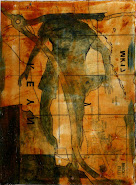

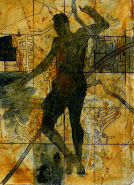

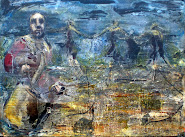

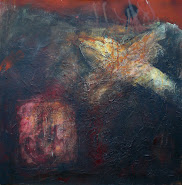

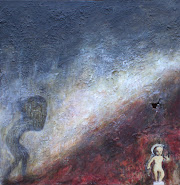

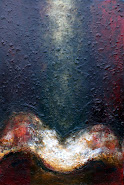

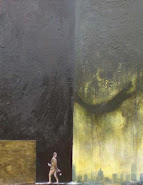



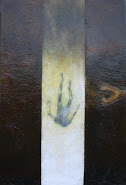





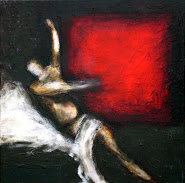


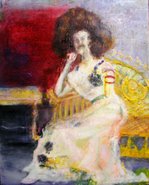
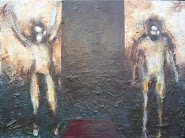


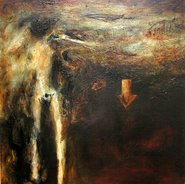
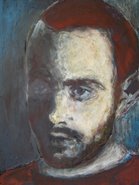
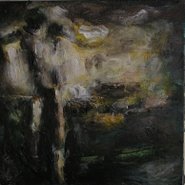
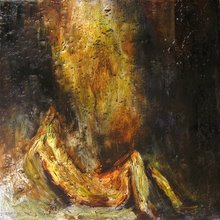
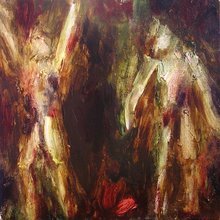
No comments:
Post a Comment